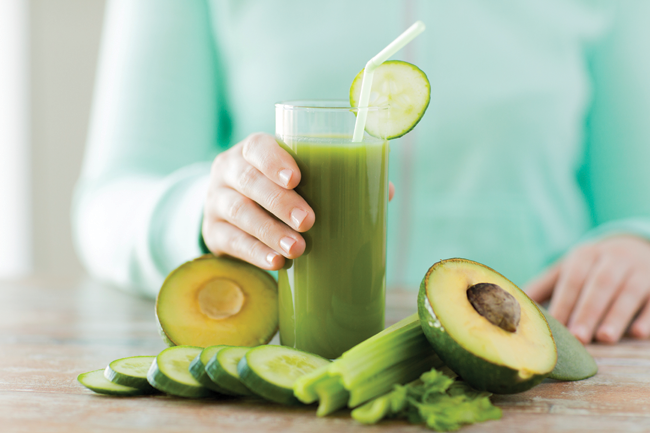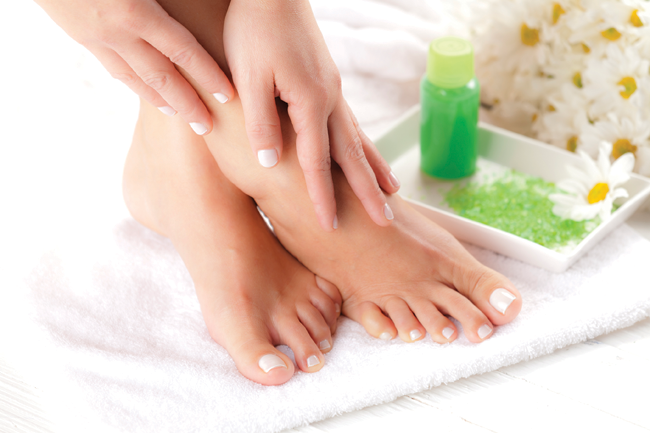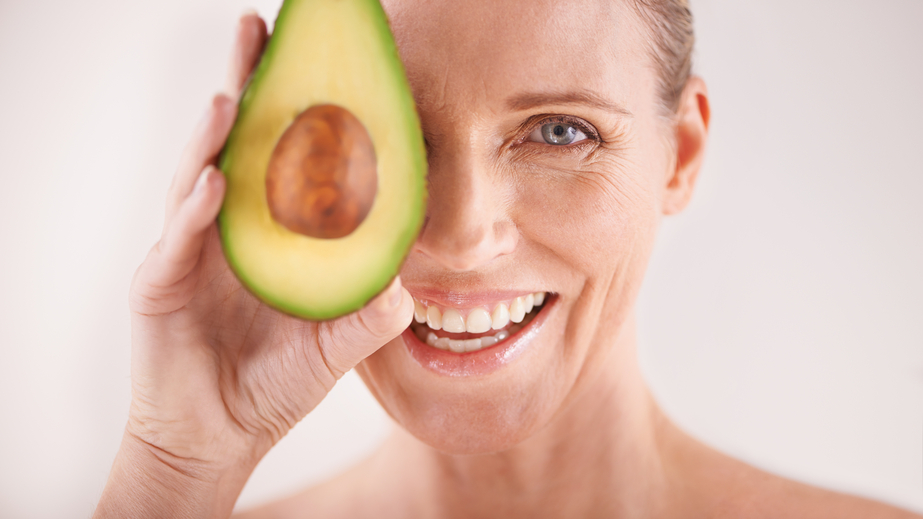Georgina Young from Greens of the Stoneage shows us how to keep our largest organ in the best possible shape for beautifully healthy skin…

Beauty on the outside begins on the inside. Yes, you too can have a head-turning, model worthy glow, by feeding your skin and starving your wrinkles. Contrary to popular belief, not all models were born with glowing, blemish-free skin. Although some are genetically blessed, they are still just as prone to puffy eyes and breakouts as you are. Models pay careful attention to what they put into their bodies and you should too – your skin is the largest organ in your body, so it’s only fair that you treat it as though it were one.
We live in a world where we turn to perfectly packaged cosmetic solutions to make us look and feel beautiful. The average British woman spends £140,000 in her lifetime, just on cosmetics and hair treatments alone. But did you know that the answer to all of your skin, hair and nail ailments lies within your refrigerator?
Our fast-paced and hectic lifestyles expose us to environmental toxins, high levels of stress and processed, genetically modified foods. All of these can cause us to suffer from a whole host of skin problems. The good news is that dull and lacklustre, acne-prone and dehydrated skin can often be remedied by just a few simple changes to your diet, turning back the clock by up to 20 years.
Your skin acts as a messenger, mirroring the condition of your internal organs. Understanding what causes your skin to break out, lose its glow, or dry out will enlighten you with the knowledge as to what you should or shouldn’t be eating. Good food provides you not only with a healthy body, but with the building blocks essential for a clear and glowing complexion.
The proverb ‘you are what you eat’ could not be more true – if you want a radiant complexion you absolutely must nourish your skin from within.
Why you should ditch sugar and processed foods
True beauty is radiant health, and it all starts with the foods that we eat. Low-glycemic diets have been found to turn back the clock and benefit those who suffer from acne-prone skin and other dermatological issues.
A high-sugar diet, in particular a diet high in refined sugars, spikes your blood sugar levels, increasing insulin and triggering the release of certain inflammation-causing hormones. These hormones result in excess sebum production and acne. Processed sugars accelerate the ageing process, resulting in the degradation of elastin and collagen, both of which keep your skin looking youthful, plump and glowing.
So, if you want to beat those breakouts and calm those crow’s feet, ditch the sugar and opt for vitamin-rich foods whenever possible. Fresh, whole fruits and berries will suffice, however, if you still feel the need to stifle your sweet tooth, opt for dried fruits or natural sweeteners such as raw honey, maple syrup, stevia or yacon syrup. Do remember that although these sweeteners are natural it doesn’t mean that they’re low in sugar and, with regular consumption, will inevitably result in problematic skin.
Refined grains and gluten are two big skin offenders – the fibre, nutrients and vitamins have all been lost during processing, and often they possess little to no nutritional benefits to our bodies. Refined grains have been linked to numerous food allergies, weight gain and of course problematic skin. Switch your bread and pasta for banana pancakes, spiralised vegetables and cauliflower rice. Opt for pseudo-grains such as sprouted buckwheat and quinoa.
For some, much like sugar, dairy can be a trigger for acne due to its high levels of hormones such as androgens and other insulin-like growth factors, both of which play a role in acne and excess sebum production. Switch your cow’s milk to a non-dairy alternative such as almond, cashew or coconut milk. If you can’t ditch the dairy, always opt for organic, raw (unpasteursied) cow’s or goat’s dairy.
Ditch these processed foods and you’ll be glowing in no time. Include a rainbow of different fruit and vegetables at every meal and, the darker and brighter the colour, the more skin-glowing nutrients there are. Aim to eat at least 2½ cups of vegetables and 2 cups of fresh fruits per day.

Make water your best friend
Your body is made up of around 60% water, and water helps to keep your skin staying flexible and looking plump. If you’ve ever looked at your face and thought it looks dry, tired or washed out, chances are you’re dehydrated. Even a case of mild dehydration can cause these unwanted symptoms.
Aim to drink around 6-8 glasses of water per day, or up to 10-12 if you work in an air conditioned office. All fluids count towards your daily water allowance, but it’s best to stick to water and herbal, caffeine-free teas such as hibiscus, red clover, tulsi and many more. If you can’t ditch the caffeine, make a cap at two caffeinated drinks a day, otherwise you’ll run the risk of dehydrating your skin.
You can also prevent dehydration by avoiding alcohol, cigarettes and refined table salt, which causes your skin to rapidly age and become dehydrated, dull and lifeless. Swap that evening glass of vino for a refreshing blended fresh fruit and sparkling water mocktail, and ditch the cigs altogether.
Foods that make you glow and turn back time

Amazing avocados
If you suffer from eczema or dry skin, avocados are your best friend as they are rich in healthy fatty acids that moisturise your skin from within. Avocados are also high in vitamins C, E and K, and the antioxidants beta-carotene, lutein and zeaxanthin, all of which protect your skin from environmental damage, fine lines, wrinkles and other visible signs of ageing.
How: Add to salads, smoothies, dips and even omelettes.
Beautifying berries
Blueberries, blackberries, cherries, grapes, and strawberries are all great sources of vitamin C, another fantastic antioxidant that protects the skin from free radicals, reducing oxidative stress, building a strong immune system and ultimately more radiant, younger-looking skin. Vitamin C also helps to stabilise messenger enzymes that break down collagen, stimulate the production of new collagen, and heal blemishes.
How: Enjoy with dairy-free yoghurt blended into smoothies, or added to omelettes.
Energising eggs
In order for skin to repair itself it requires a good source of protein, rich in essential amino acids, such as eggs. Eggs contain lysine, proline, collagen, biotin and sulphur. Biotin helps to keep your hair and nails strong, while sulphur smoothes the skin.
How: Enjoy poached in omelettes, or added to leafy green salads.
Fabulous fish
Fats are not only essential to our bodies and brains, but are great for our skin too. Our skin cells are surrounded by a fatty membrane that protects them, so fatty acids are essential to keep them healthy. The Omega-3 fats in salmon, herring and tuna help to decrease inflammation, reduce the risk of acne and plump and smooth out the skin, diminishing the appearance of wrinkles.
How: Grill or steam; dress with a simple, delicious marinade.
Glowing greens
If you’re not getting enough vitamin A in your diet, chances are that your skin is dry and flaky. Dark, leafy greens such as kale, rocket, spinach and Swiss chard are packed with beta carotene, the precursor to vitamin A, a powerful antioxidant that repairs and renews your skin, leaving it glowing and radiant. Carrots and sweet potatoes are also high in beta carotene.
How: Blended in your daily smoothie, as a green juice, or lightly steamed; drizzled with extra-virgin olive oil.
Soothing seafood
Seafood such as crab and oysters are rich in zinc and zinc deficiency can lead to dry skin, hangnails and even hair loss. Grass-fed beef and pumpkin seeds are great sources of zinc too.
How: Enjoy crab in soups, salads and vegetable pasta dishes. Season oysters with salt, black pepper and lemon juice.
 About the author: Georgie is a fresh faced, freelance writer and recipe developer who specialises in nutrition, fitness, and health and well-being. She enjoys sharing her passion for cooking, Paleofying food, and exploring Veganism within the Paleo diet on her blog, Greens of the Stone Age, and along the way has helped many friends to take a more holistic approach to their hectic lifestyles. She have further expanded upon her love of the Paleo way of living by setting up Primal Eye Magazine – the UK’s 1st online Paleo lifestyle magazine!
About the author: Georgie is a fresh faced, freelance writer and recipe developer who specialises in nutrition, fitness, and health and well-being. She enjoys sharing her passion for cooking, Paleofying food, and exploring Veganism within the Paleo diet on her blog, Greens of the Stone Age, and along the way has helped many friends to take a more holistic approach to their hectic lifestyles. She have further expanded upon her love of the Paleo way of living by setting up Primal Eye Magazine – the UK’s 1st online Paleo lifestyle magazine!
